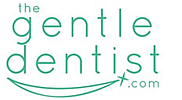Sedation Dentistry in Shelby Township, Michigan
Hi, this is Dr. Antolak at the TheGentleDentist.com, in Shelby Township, Michigan. Our phone number is 586-247-3500. You might be asking what the heck are you doing with a blood pressure cuff on and a piece here on my finger. And if you’ve gone into the emergency room or the doctor’s office, you notice that they obviously take your blood pressure. And what I wanted to do is just to explain some of the safety precautions that we use during our oral sedation. We are a member of the oral sedation certification for doing oral sedation in a safe and very effective manner. Our whole staff went to Chicago recently at this course and got certified for doing that. What I want to do is just to explain a little bit about what to expect during a sedation appointment in this office or somewhere else. First of all, I’d like to come down here. This is what’s called nitrous oxide, nitrous oxide has been used for many, many, many years. Nitrous oxide is a inhalant so this would go onto a patients nose and then they breathe in and out of this little nose piece here. What this nose piece does has is there’s a mixture of what’s called nitrous oxide and oxygen and we have a regulator here at the base that will allow us to move this up and down and it will mix oxygen either from one hundred percent oxygen to a maximum of thirty percent oxygen to 70% nitrous oxide. So the most you can get is 70% nitrous oxide. Nitrous oxide is a wonderful very short term fix, it allows for a certain level of relaxation. Kind of a little buzzing feeling. And the beauty is since it’s inhaled, when you’re done with the procedure, the dental procedure we can turn it down to oxygen, and bring up, bring a 100% oxygen in and breath it. And over time, it doesn’t take but 5 minutes. Your back to normal so you can drive. The benefits of nitrous oxide once again, it’s very short-term. There really not a lot of restrictions to it. Most everybody is qualified to use the nitrous oxide. Very few people it’s contraindicated to. So it’s very beneficial, most all of you heard of the gas, or laughing gas, that’s another name for the nitrous oxide. People do very well. We use nitrous oxide sometimes on patients if they are just having something small done or if they just are a little bit nervous about a procedure. This is the oxygen, this and nitrous is supplied through this bottom tube here and so you breathe it in through the nose and then you breathe out.
And this part here on the top is part of what is called the scavenger. Scavenger is hooked up to our suction. So we have a unit that provides a vacuum all the time in the office that’s what a lot of things to be sucked out of the mouth, and for example that suction is attached to the nose here so it provides negative pressure so when somebody breathes out of it. The nitrous oxide goes into these tubes here, goes into our suction and gets ventilated outside. So what it does, it provides a safe, healthy environment for all of our staff to be in and it also provides just the fact that you can use it, just localize in someone and it goes right back out. So that’s what those 2 tubes are for. When we do sedation, not necessarily just using nitrous oxide, we do a deeper level sedation called oral conscious sedation. We will actually monitor your heart rate and blood pressure during the process. This here is called an oxycenter. What it does is, is it measures the amount. You can see in here this top number here is 56. That measures my, my pulse rate. It also measures the amount of oxygen that I have in my bloodstream. So, it’s at 92 now. I’m kind of talking like this now. Over the next fe
